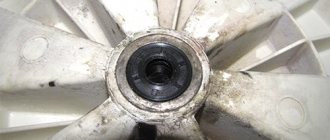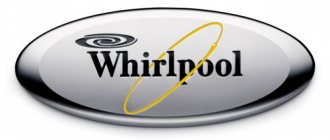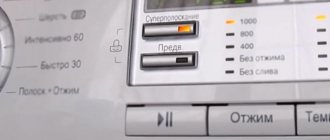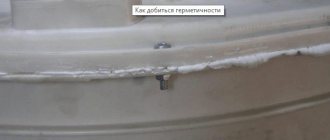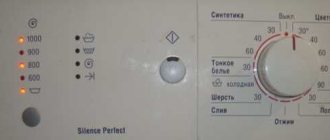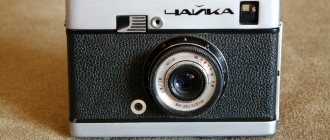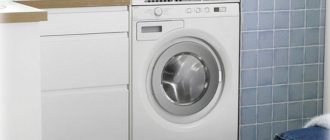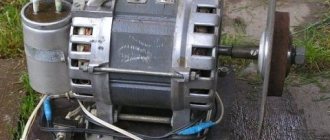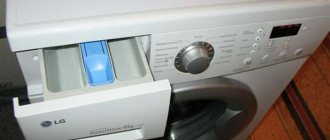There is a washing machine in almost every home, but for its long-term operation, the device must receive appropriate maintenance and care from time to time. Despite the fact that the device is constantly in contact with water, the internal parts must be protected from moisture. The seal for the washing machine is used for these purposes. It is in the middle of which there is a hole for the shaft. During operation, it constantly rubs against the rubber, wearing it out. As a result, this can lead to cracks through which water begins to seep.
Why is it necessary to lubricate the oil seal?
The outer surface of the shaft installed in the washing machine is in close contact with the oil seal. When using lubricant, the oil seal performs its intended purpose much longer. This will avoid frequent replacement and unexpected repairs in case of cracks. In addition, lubricant improves glide. If you do not carry out the required maintenance, after some time the elastic band will begin to dry out and will allow moisture to pass through. As a result, in addition to the oil seal, the bearings of the washing machine will also have to be replaced.
Why do you need a seal for a washing machine?
The oil seal is a small part in a washing machine that plays a very important role. It protects the moving parts of the washing machine from water that spins in the drum during washing. Thanks to the seal, water cannot enter the electronic parts from the tank. The oil seal is put on a special bushing and fits tightly to the outer part of the drum.
Oil seals are a sealing material, which is also called a rubber shaped seal.
Typically, the seal is made of durable rubber to perform the sealing function, and it also connects the fixed and moving parts of the automatic washing machine.
The oil seal, also known as the cuff, can be made of different rubber - silicone rubber, fluorine rubber or nitrile-butadiene material. This part is constantly subject to friction and very often its wear causes malfunction of the washing machine.
To extend the service life of the oil seal, you need to constantly lubricate it so that it does not dry out. When the rubber seal dries out, water can enter the bearing and cause serious damage.
It is quite difficult to understand that the oil seal is being rubbed. A washing machine sound specialist can determine this malfunction. It is better to replace the oil seal at a service center, but you can install it at the client’s home - in this case you will have to disassemble half of the unit.
What is the best lubricant to use?
Experts advise choosing silicone water-repellent lubricants for oil seals, for example LIQUI MOLY Silicon-Fett, and not resorting to folk remedies such as oil or fat. Specialized compositions are designed for a certain temperature range (in the case of the named composition, this is from -40 ° C to +200 ° C), which is very important. At maximum speed, the machine parts heat up, so the composition with which the oil seal is lubricated must correspond to the operating conditions of the device parts.
You can find such a product in almost every store that specializes in selling spare parts for repairs or equipment care products. Before making your final choice, it is worth noting a number of characteristics that a lubricant for a washing machine oil seal should have:
- The composition should not contain aggressive substances that can corrode or soften rubber. Otherwise, it will only shorten the service life of the oil seal.
- Increased heat resistance. During operation of the washing machine, the shaft begins to actively contact the oil seal, as a result of which the part begins to heat up. It is recommended to choose a composition that can withstand temperatures up to 200 degrees.
- Density. If the composition is thick, we can say with confidence that it is of excellent quality. There is no point in using a liquid substance, since it will not stay on the surface of the part.
These characteristics will serve as optimal guidelines for those who have decided to change the oil seals or make repairs themselves. As for the manufacturer, it should not act as the main criterion.
Lubricant characteristics
When choosing a composition for treating oil seals, carefully study the information about it. Having purchased a low-quality product, you will quickly have to repair the equipment again. Lubricant for washing equipment elements should be:
- moisture resistant. This tells how quickly the substance is washed away by water. The slower this happens, the longer the bearings are protected from moisture;
- resistant to temperature changes;
- safe for the seal. It should not contain aggressive components that can corrode rubber;
- viscous. This will allow the product not to spread throughout its entire service life.
High-quality lubricant that meets all quality standards cannot be cheap.
It is better to purchase lubricants in specialized stores or service centers for servicing washing machines. For a one-time repair, it is not necessary to buy a whole jar of the product; some manufacturers produce lubricant in small syringes. This volume is just enough for home use, and the price for a small package is much more pleasant for the buyer.
Alternative options
Manufacturers recommend choosing original compounds designed for specific models for bearings and seals of washing machines to ensure maximum protection of the parts. In reality, they are no different from the universal options, but their cost is several times higher.
Since every person tries to save money, but at the same time get a high-quality composition, you can pay attention to the lubricants used in the process of maintaining various devices, which are also suitable for the oil seal of a washing machine:
- "Litol-24".
- "Ciatim-221".
- Ambligon.
How to lubricate the oil seal?
Contact specialized stores for lubricants. Specify why you are taking them, and the seller will suggest a suitable option. But keep in mind that such a product is not cheap, as it is highly specialized.
Anderol for washing machines
Lubricant made in Italy. Chemically neutral. Excellent moisture resistance. Maximum operating temperature: + 190 degrees. Not afraid of heating. For any seals.
Amblygon - lubricant for oil seals
This is another Italian version. Works at the same temperatures as Anderol. Repels water, not aggressive. Packaged in syringes with a capacity of 2 ml, as well as in 100 gram tubes.
Litol-24 and 24 M
A universal product - suitable for different purposes. When heated, it does not become harder or stronger. High stability in mechanical and chemical terms. Range: minus 40 – plus 120 degrees. Properties of modification 24M - no compaction in an aqueous environment, mechanically stable, can be combined with other lubricating compounds.
Choosing a lubricant
There are several types of lubricant that are used for bearings and seals. They all have different properties, so you need to choose carefully. The lubricant must meet the following requirements:
- must be moisture resistant. An oil seal is a sealing ring that fits onto a bearing rotating on a shaft, thanks to which water does not penetrate inside the bearing. Therefore, the lubricant on the oil seal should not be washed out with water during operation
; - be heat resistant. When water is heated to a high temperature and the shaft is heated during rapid rotation of the drum, the oil seal and bearing also heat up, the lubricant must not lose its properties, otherwise water will get inside the bearing;
- should be suitable for rubber and not be aggressive. Due to poor-quality lubrication, the seals can become “stiff” or, on the contrary, become very soft, as a result of which the seal will be compromised;
- should be thick. The grease will not leak out while the machine is in use.
Important! It is better not to use automotive lubricants such as Litol-24, Azmol and others. They are extremely inefficient and very soon you will have to change the bearings in your washing machine.
In service centers to lubricate oil seals, they most often use:
Bearings or seal?
Few people ask the question of how to lubricate a bearing in a washing machine, believing that this is not necessary. Most people buy a new set of bearings and seals, and when installing, only lubricate the seal and bushing. As for bearings, they usually already contain lubricant.
If the bearings were purchased from a store that orders original spare parts from the manufacturer, then you can safely put such bearings in the washing machine. In bearings of questionable quality, it is better to renew the lubricant; in most cases, they are filled with cheap low-performance lubricant.
Therefore, the answer to the question of what needs to be lubricated, bearings or oil seals, is this – that’s all. The main thing is that it is one lubricant; mixing different lubricants is unacceptable. In this case, it is better to lubricate only the oil seal and bushing.
Removing the tank
Now let's talk about how to lubricate such important parts of the washing machine. Let us warn you right away that this process is very labor-intensive, since it will require almost complete disassembly of the machine in order to remove the tank and drum from it. Before starting work, disconnect the machine from the water supply, drain and electricity, and then place it so that it can be accessed from all sides. Prepare screwdrivers and pliers, then follow the instructions:
During this work, you can record the stages with a camera. The pictures will help you assemble the washing machine correctly, without confusing the connections of wires and pipes.
Lubricants to avoid
Today there are craftsmen who believe that they can make the lubricant themselves. Moreover, in their opinion, the homemade substance is in no way inferior in characteristics to professional products. In reality, everything is not so simple. Manufacturers test their product many times, prove its reliability and protective properties, test numerous samples in order to ultimately offer customers a worthy product.
Also, newcomers to the repair business try to treat washing machine parts with automotive lubricant, but in this case it is even worse than homemade lubricant. Any compositions based on petroleum products are categorically unsuitable for servicing washing equipment. This is due to several factors:
- The average service life of such lubricants is 1-2 years. After this, you will have to disassemble the machine again and lubricate the oil seal. Why complicate your life when you can immediately treat the bearings with a decent and “long-lasting” product;
- Automotive lubricants are unstable when exposed to detergents.
If there are a few more products that experts do not recommend using for treating washing machine components.
- Solid oil, lithol. They are prohibited from being used when servicing washing machines. Some “craftsmen” still use the means, and then wonder why the bearings, after a short period of time, failed again. These compounds perform their functions only under certain loads characteristic of cars. In automatic machines, the working conditions are completely different, and grease and lithol simply become powerless and do not protect the parts.
- Cyatim - 221. Although this is a professional lubricant, it is characterized by low hygroscopicity, that is, it loses its properties upon prolonged contact with water. The interaction of the seal with the liquid is inevitable, therefore this composition is not recommended for treating washing machine components.
So, you should not save money by using grease, lithol, or homemade lubricant. It’s better to pay once for a high-quality composition and forget about problems with the oil seal and bearings of the automatic machine for a long time.
Let's finish
After removing the tub from the washing machine, inspect it. It can be collapsible or solid. Non-separable tanks are found on Hotpoint-Ariston and other washing machines. To get to the bearings in such a tank, you will have to saw it along the joint seam. If you do this very carefully, you can connect the halves back together using bolts and sealant.
The halves of the collapsible tank are connected with bolts and special latches. After the tank is disassembled, you need to knock the bearing out of its seat; we provide detailed instructions on this in the article.
After removing the bearings, inspect them for damage. Typically, a washing machine is disassembled when the bearings have already failed; it is unlikely that anyone will disassemble the equipment to check the lubrication and lubricate the part. So, if the bearing is damaged, then you need to purchase a set of new bearings and an oil seal, which it is reasonable to replace immediately.
If the bearing can still be used, it needs to be lubricated. First, it is cleaned of dirt using WD-40 penetrating lubricant and wiped with a clean cloth, and then lubricated. In a dismountable bearing, use a scalpel to remove the protective cover and apply lubricant.
Lubricating a non-separable bearing is a little more difficult, but it is possible, the video below shows how to do it.
If the new bearing does not need to be lubricated, then the oil seal must be lubricated. The lubricant is spread in an even layer along the inner ring, which is in direct contact with the bushing. After installing the bearings, the oil seal is installed. All components of the washing machine are assembled in the reverse order.
As you can see, the process of lubrication of bearings and seals is simple, but to get to the parts themselves, you will have to do a lot of work. That is why most often they turn to a professional craftsman for such work. But if you have the time and desire to work, do the repairs yourself, good luck!
Despite the fact that the washing machine is constantly in contact with water, there are parts in it that should not get wet. To a large extent, this applies to drum bearings, which quickly wear out when the lubricant is washed out. The bearing is protected from water penetration by an oil seal - a hermetic seal.
Some users are wondering: do I need to lubricate the washing machine oil seal? Let's figure it out.
First, let's look at the structure and operating principle of the oil seal. Not a single washing machine is complete without this part.
This rubber o-ring serves to protect the bearing at the joints from water. For high-quality sealing, the washing machine tank seal must fit as tightly as possible. That is why it is recommended to replace it at the same time as the bearings.
A metal bushing passes through the central axis of the tank, which, when rotated, contributes to wear of the oil seal. To prevent this from happening, it is necessary to use a water-repellent lubricant for the oil seals.
Some users use folk remedies such as oil or fat. Of course, this seems more economical, since lubricant that meets all standards is expensive.
Dear users! Do not forget: by saving on lubrication, you reduce the service life of the oil seal. Subsequently, you will have to spend money on new parts and replace them.
Before replacing the oil seal, let's figure out what lubricant to choose.
Properties that a lubricant must have:
- Moisture-repellent.
- Without aggressive chemical components. Otherwise, machine parts will be destroyed under their influence.
- Resistant to temperature changes.
- Viscosity – for long service life.
Experts recommend using silicone water-repellent lubricant for LIQUI MOLY “Silicon-Fett” oil seals. It can withstand temperatures from -40°C to +200°C. It is considered the most effective of all presented.
Other means are also popular. How else you can lubricate the oil seal in a washing machine, read below.
Italian-made lubricant has a neutral chemical composition and water-repellent properties. Withstands temperatures up to +190°C. Perfectly retains its properties when heated. Suitable for all types of seals.
Amblygon is a lubricant for oil seals from an Italian manufacturer. The product perfectly retains its properties when exposed to temperatures from -28 to +192°C. It has water-repellent properties and is chemically inert. It is packaged both in portions in syringes of 2 ml and in packages of 100 g.
Multi-purpose lubricant is water resistant. Unlike non-professional products, it does not harden when heated. Able to withstand temperatures from -40°C to +120°C. Chemically and mechanically stable.
The product has a moisture-repellent effect, reliably protecting components from corrosion. Withstands temperatures ranging from -40°C to +120°C. Compatible with other lubricants, does not compact in water, and is mechanically stable.
Homogeneous grease with multi-purpose applications.
Replacing the oil seal in a washing machine requires that the lubricant must withstand temperature changes. CIATIM-221 can withstand from -60°C to +150°C. It is successfully used in friction units and does not lose its properties when boiled.
However, there are also disadvantages: the lubricant is hygroscopic, therefore, when it absorbs moisture, it thickens and loses its properties. In addition, it cannot be used together with other means. Chemically inert.
Make your choice and purchase the appropriate lubricant.
Now let's look at how to change the oil seal.
Let's figure out how to get to the oil seal. Here are the step by step steps.
- After disconnecting the machine from the network and communications, drain the remaining water from the drain filter. It is located under the front panel, behind a small hatch.
- Remove two screws from the back to remove the top panel. Now unscrew the screws around the perimeter of the back panel and set it aside.
- Remove the drive belt from the drum. Using the hammer handle to lock the pulley, unscrew its central bolt and remove it from the tank.
- Disconnect any wiring that may be attached to the drum. It is usually secured with plastic clamps, so use wire cutters.
- After disconnecting the motor wiring, unscrew the fastening bolts and pull the electric motor out of the housing. Also unfasten the wires from the heating element.
- Remove the tank top counterweight bolts. Put it aside.
- Pull out the detergent dispenser by pressing the central latch. Remove all bolts that hold the control panel in place. Unlock the plastic latches, remove it and place it on top of the case.
- Loosen the filler valve clamp and disconnect it from the tank. Pull out the powder hopper along with the filling valve. To do this, unfasten the wires from the valve and unscrew the mounting bolts from the back.
- Remove the pressure switch hose, which is usually attached to the tank.
- Open the hatch door, bending the sealing rubber, remove the outer clamp. Tuck the cuff inside the tank. Unscrew the screws of the UBL lock, placing your hand behind the SMA body, pull out the lock and unfasten the wiring.
- Unscrew the screws around the perimeter of the front panel, pull it up and set it aside.
- Remove the counterweights from the tank by unscrewing the bolts.
- After unscrewing the shock absorbers, remove the tank from the hooks and pull it out.
You have completed the removal of the tank. Now let’s figure out how to properly remove and install the oil seal in the washing machine.
Before installing the oil seal correctly, apply lubricant. Begin to lubricate the outer surface with a thin layer. After installing the seal in place, use a syringe to apply lubricant to the inner surface.
When you purchase a washing machine, of course, you want to believe that the unit will serve you faithfully for a couple of decades. But this is often not the case. Devices from different manufacturers have different service lives; much depends on how often you use the washing machine and whether you follow the operating rules. And if we talk about caring for a washing machine, then measures should include not only the purchase of expensive powders and cleaning the unit, but also measures aimed at preventing the internal parts of the device.
Every washing machine has a seal and bearings. We will tell you how to properly monitor the condition of these parts so that both the oil seal and bearings in the washing machine work properly for a long time.
Self-lubrication of parts
Oil seal lubrication is carried out according to the same principle as bearing lubrication. To get to it you will need to completely disassemble the washing machine:
- unscrew the lid (top of the machine);
- disassemble the front and back parts of the wall;
- remove the tank and disassemble it into two parts;
- After this you can remove the oil seal.
If the seal and bearings are damaged, you will need to buy new parts and replace them. If the bearings are in order, then you just need to lubricate them. But first, clean off the dirt. To do this, you can take Anderol lubricant. This is done like this: remove the protective cap from the disassembled bearing and squeeze out the lubricant inside. If the bearing has been replaced with a new one, then it is not necessary to lubricate it with Anderol.
Things are completely different with the oil seals; they need to be lubricated in any case. Anderol waterproof seal lubricant is squeezed out in an even layer onto the inner race that contacts the bushing. After completing these procedures, the first thing to do is install the bearing in place, followed by the oil seal. The remaining parts are assembled in reverse order.
Below we offer a video that describes in detail the replacement and lubrication of the oil seal. Detailed instructions can also be found on the form.
Despite the fact that the washing machine is constantly in contact with water, there are parts in it that should not get wet. To a large extent, this applies to drum bearings, which quickly wear out when the lubricant is washed out. The bearing is protected from water penetration by an oil seal - a hermetic seal.
Some users are wondering: do I need to lubricate the washing machine oil seal? Let's figure it out.
A little about the oil seal and how to lubricate it
The oil seal is the part located between the moving and stationary parts of the LG washing machine. As a rule, this is a rubber element. The part is made from this material because the first one is designed to seal and seal the connecting parts of the device.
The bearings are located next to the oil seal. The former protect the bearings from liquid getting into them. Oil seals are subject to periodic replacement, as are bearings. It is then that the articulated part of the washing machine will be airtight and tight.
The drum of the LG device is fixed to the axle shaft. When the shaft element rotates, it contacts the oil seal. And where there is rotation, there is constant friction. That is why the oil seal and bearings may soon become unusable. And to prevent this from happening, many use a product such as silicone grease for washing machine oil seals and grease for washing machine bearings. When treated with lubricant, the parts begin to glide better and rub against each other less. And if you do not use lubricant for the seals and bearings, the parts will dry out and get wet, and, as a result, the bearing and the entire washer will break.
Description of the seal
The main task of the oil seal is to prevent water leaks. It is noteworthy that it is used not only in automatic, but also in mechanical machines. Each of them has its own size and its own seal shape. Therefore, oil seals from different models differ from each other. The properties and qualities of this part depend on the material of manufacture (rubber, silicone).
Washing machine parts
The stronger the material from which it is made, the higher the quality of the oil seal. Each oil seal has special iron plates that protect against deformation.
It is used in all types of automatic washing machines. However, in different models it may have a different shape and size. The seals used in machines may have some differences from the seals used in other types of household appliances.
In the manufacture of all types of seals for a washing machine, a special metal insert is used. It plays the role of reinforcement and helps maintain the correct shape. This insert can be quite fragile, so you must be careful during the replacement process to avoid damaging it.
Let's look at the issue of the location of the oil seal in front-facing washing machines. The drum in these machines is fixed on a bracket. The bracket has several legs. Usually 3-4 pcs. In the middle of it is a steel axle shaft. It is needed to secure the drum to the bearing assembly. This type of fixation allows the drum to rotate. That is, to have mobility. The axle shaft causes the electric motor to turn.
Oil seals for washing machines are not attached to the shaft, but to a special bushing. And paired with it, it ensures normal operation of the washing machine and protection against water leakage. They provide water resistance and protect the bearings and the entire assembly from moisture penetration. If moisture gets on the bearings, then pretty soon they will rust and become unusable.
You can find instructions for replacing bearings yourself below.
What kind of silicone waterproof lubricant Anderol should be?
Some housewives, trying to find out what silicone lubricant should be for a washing machine, see information about folk remedies: oil and grease applied with a syringe. Undoubtedly, you will save money in this case, but your washing machine is unlikely to thank you for such a lubricant.
- Moisture-resistant product. After all, there is liquid in the washing machine, and the lubricant should not be afraid of it.
- Have an aggressive chemical composition. Otherwise the seal will be destroyed.
- Resistance to temperature changes. The Lubricants used must not disintegrate at high temperatures.
- Use thick and viscous lubricants. Otherwise, they will be washed off in the washing machine.
Now you understand what a silicone lubricant for a washing machine should be.
Lubrication requirements
Of course, there will be those who will say that the oil seals can even be lubricated with sunflower oil, but for them we have serious arguments why this should not be done.
- Oil seal lubricant must be moisture resistant. This is necessary so that it does not wash out with water over time.
- The lubricant should not be aggressive and “corrode” or soften the rubber. If you lubricate the oil seal with a lubricant that is not intended for this purpose, it can shorten its service life.
- Heat resistance - since when the washing machine is operating, there is constant friction between the shaft and the oil seal, as well as the operation of the bearings, and they heat up. Also, when washing in hot water, the lubricant is affected by temperature, so the lubricant should not lose its properties when the temperature changes.
- The consistency of the lubricant should be thick so that it does not leak out during long-term operation.
As you can see, oil seal lubricant must be taken seriously, since the “wrong” lubricant can ruin all your work on replacing bearings and hasten a new similar repair.
There is a category of washing machine owners who, instead of specialized compositions for caring for oil seal devices, prefer to use folk remedies, for example, vegetable oil or fats. This solution is certainly more economical, but it does not have the best effect on the condition of the mechanism.
- are moisture resistant, that is, they do not lose their properties when in constant contact with water;
- have a non-aggressive chemical composition that does not destroy the surface of the oil seal and metal shaft;
- resistant to temperature changes, do not disintegrate and do not lose their qualities when exposed to heat;
- have sufficient thickness and viscosity to not be washed off with water for a long time.
Oil seal lubricant is usually sold in stores that specialize in selling washing machines or spare parts for various types of household appliances. The price of this consumable may unpleasantly surprise you: this is due to the fact that this is a narrow-purpose product that is quite difficult to find on sale.
Often, manufacturers of household appliances produce oil seal lubricants that are intended specifically for a given brand of washing machine, but in reality are suitable for all models. Most lubricants are interchangeable; you just need to pay attention to the main component of the composition. Silicone and titanium lubricants are popular, they repel water well and can withstand temperatures up to 200 degrees.
Sunflower or other household oil is not suitable here. The substance used to lubricate the sealing ring has special requirements.
- High moisture resistance. Otherwise it will quickly wash out.
- No aggression towards rubber - it should not corrode or soften. By choosing the wrong substance, you will shorten the life of the seal.
- Heat resistance. Due to the friction of the shaft and the operation of the bearing unit, the rubber heats up. Hot water should also not affect the properties of the sealing element.
- Sufficient thickness. Liquid consistency is not suitable - it will leak out after some time.
We use Anderol waterproof lubricant
As a rule, Anderol waterproof lubricants are sold at retail outlets where washing machines and spare parts for units are offered. But the price characteristics of this product will be unpleasant for you: after all, these are highly specialized lubricants that are not sold in ordinary stores.
Some washing machine suppliers produce oil seal lubricants designed for each specific unit. But in some cases, such products can be used for any other device, because lubricants are interchangeable. When purchasing this composition, look at what components are included in the lubricant. Products based on silicone and titanium, which perfectly repel liquids and are not afraid of high temperatures, sell well. These products are applied using a syringe.
Oil seal in the machine device
In front-type washing machines, the drum is attached to a bracket with 3-4 breakers and a half shaft located in the middle. A steel axle is needed to secure the drum to the bearing assembly. This causes the drum to move. In addition, the axle shaft is driven by an electric motor.
Description of washing machine parts
Silicone oil seals are attached to a bushing, together with which they prevent leaks and ensure normal operation of the equipment. First of all, it prevents moisture from reaching the bearings, which, when in contact with water, become corroded and stop working. The oil seal is the main part of any machine. If it gets damaged, you will have to change not only it, but also the bearings. In this case, the entire device will be required, which is not desirable for this device. Therefore, it is better to replace the lubricant for the washing machine seals on time.
Attention! To carry out such repairs, a non-professional will need a lot of free time and it is not a fact that it will be successful. Contacting a specialist will cost the family a significant amount.
Instructions for use
To replace the oil seal and update it using a syringe of Anderol waterproof lubricant, you need to disassemble your washing machine by pulling out the drum. Change the creative parts that we talked about at the beginning of our material and apply a lubricant to the bearing and oil seal. The layer of product used should not be thick and smooth. Apply the product to the outer edges first, then the inner edges. In the latter case, waterproof silicone grease should be applied in a thicker layer. Finally, return the seal to the owl's nest. We have attached photos and videos to the article so that you can see how this work is carried out.
Analogues of lubricant or how to replace lubricant for the oil seal of a washing machine
What can replace Anderol, which is the subject of our article? Indeed, in some cases, you may simply not find this composition in stores and will wonder what to replace it with. Then you can use solid oil or lithol. But professionals do not recommend using these compounds, because the seals will wear out quickly. After all, such products are used by motorists, but they will harm the washing machine. For this reason, it is better to buy specialized lubricants, sparing no expense on them and without thinking about what to replace. It is precisely these lubricants, applied with a syringe, that will be safe for your washing machine; for example, Anderol washing machine lubricant is very good.
The oil seal is perhaps the only part that is in direct contact with the engine shaft, and therefore, lubricant for oil seals is absolutely vital. Otherwise, during the friction process, this part will very quickly fail.
The price of the oil seal is mere pennies, but if it is destroyed, very soon a sad fate will befall the bearing, the price of which in the store is quite high.
The oil seal is a rubber ring that serves to seal possible leaks between static and moving parts of rotating mechanisms.
Replacing a bearing is an operation that will happen one way or another if your SMA is in use for long enough. In principle, this procedure is not complicated; it can be said to be quite routine. But there is one significant “but”. If you replace the bearing, but ignore such a step as lubrication, then all the work will go down the drain and, alas, you will have to pay twice in the store.
A seal running “dry” will very soon wear out and begin to leak water. This, in turn, will quickly destroy the bearing. Thus, there is no doubt - lubricating washing machines is a necessary operation, and neglecting it, as they say, is more expensive for yourself.
So, we agree that lubricant for oil seals is necessary. Now, to solve the problem formulated above, let’s try to answer the question of which lubricant for washing machine oil seals is best suited.
What and where to lubricate
Not many people know that bearings require maintenance, but oil seals are also required to be lubricated. Usually the bearings already have grease in them.
If this part is original, made at the manufacturer and bought in a specialized store, then you can put it in the car without additional processing.
Otherwise, questionable quality necessarily requires preliminary care, because cheap materials and lubricants are usually used, among other things. It's better to update it yourself.
Everything needs to be lubricated! Bearings, seals and bushing. But! There should be one lubricant for them. You cannot mix different products.
Analysis of materials
To solve the question of how to lubricate a bearing in a washing machine, we need to understand what we want to get.
- moisture resistance. A necessary requirement that needs no comment is that waterproof treatment is a priority;
- the lubricant must be neutral in relation to rubber, otherwise the oil seal will quickly fail;
- The oil seal is constantly exposed to friction, and therefore to high temperatures. Therefore, one of the requirements for the oil seal must be its heat resistance;
- In order for the product not to flow out, the consistency should be viscous.
Why do you need an oil seal?
This is a round seal. Material: rubber. Its function is to seal the gaps between moving and non-moving parts. In an automatic washing machine (AWA), a sealing rubber ring is necessary to prevent leaks in the tank. Drum bearings are parts that protect against moisture. It is the seal that protects them from water.
To ensure tightness, a rubber ring, placed on the shaft and inserted into the bearing, is attached with maximum density - this prevents water from flowing out through the joint gaps. Rotation of the metal bushing with the seal attached to it leads to increased wear of the rubber. To slow down wear, you need a special water-repellent lubricant.
Lubricant selection
Immediately remove the following message: you cannot skimp on processing lubricants for oil seals. Go to the store and choose. Good material in the store is expensive and you have to agree with this. Another thing is how to choose a reliable and durable one from the abundance of expensive products.
Let's try to conduct a short review of the materials. When visiting a store, you need to remember that some products can be replaced, and some can be completely removed from the agenda. The top five best impregnations for SMA oil seals include the class of silicone lubricants.
How to lubricate a bearing in a washing machine?
In order to lubricate the bearings of the washing machine, you need to prepare a set of materials and tools in advance:
— specialized lubricant for washing machines; - scalpel; — three-legged puller; — a set of wrenches; - a Phillips screwdriver.
Lubricating the bearings of a washing machine will require you to almost completely disassemble the device. You will even have to remove the tank and drum from it. In order for your goal to be achieved, you need to adhere to the following algorithm of actions:
— We dismantle the top and back covers of the washing machine body. Remove the drive belt from the drum pulley.
— Use a wrench to unscrew the drum fixing screw. Unscrew the fixing bar from the back of the case.
— We disconnect the drum pulley from the axle with a three-legged puller. Disconnect all the wires that you can see.
Advantages of silicone lubricants, what to replace?
Wherever silicone-based materials are used! In dentistry, plumbing, printing, etc. Since the temperature range of silicone materials ranges from -45 to +300 °C, they are also used in precision electronics. Silicone material forms on the surface being treated a saturated layer of polymer material consisting of uniform silicone molecules. He is:
- slippery and water-repellent;
- adhesive (ability to adhere to any surface) to metal, rubber, plastic;
- effectively resist friction.
Experts recommend using specialized products for washing machines, without resorting to proven products such as Tsiatim, Litol or Azmol. For consultation, contact any specialized store. The effect of using these funds, of course, will be, but, alas, not long-term. Very soon the bearings, under the influence of an aggressive environment, will begin to “creak” and “crumble.”
Professional lubricants
Today in specialized stores you can find a variety of lubricants that differ in characteristics, cost, and purpose. To repair and maintain washing machines, you need to buy professional products approved by the equipment manufacturers. What lubricants are we talking about?
The Indesit brand recommends the professional composition Anderol. The lubricant meets all quality standards and has different release forms: in 100 ml cans and syringes for one-time use. Indesit also produces Ambligon for rubbing oil seals; its characteristics are very similar to the previous substance.
Silicone lubricants are excellent for modern washing machines. They do not allow water to pass through, withstand sudden temperature changes, and are not washed off with washing powders. Silicone compounds differ from each other, so carefully study the information on the product packaging to choose a product that meets your requirements.
Titanium professional lubricants have performed well; they are also approved for servicing automatic machines. They are even suitable for machining highly loaded oil seals. Such compositions are not afraid of temperature changes, and their properties do not decrease throughout their entire service life.
Which lubricants are better?
Litol-24. Production: mineral oils are thickened with a mixture of lithium technical soaps with the addition of antioxidant additives. Pros: waterproof, high chemical and thermal resistance. If you remove the temperature range, it will be from -45 to +139 °C. Adequate replacement for SHELL.
CIATIM-221. The advantages include resistance to high temperatures and stability during prolonged friction, which has a positive effect on the operation of the bearing seal; waterproof. The downside is weak hygroscopicity, i.e. With constant exposure to a humid environment, the material becomes unusable, although this process can take years. A good replacement is the SHELL series.
LITIN 2. In this case, we are dealing with a highly specialized product intended for use in extreme conditions on vehicle components, which means it has a multiple margin of safety and “survivability.” This product has proven itself to be a worthy replacement for products from a brand such as SHELL, which in itself is a high indicator.
CIATIM-201. This product has found its application in friction points of aircraft equipment, where it is necessary to relieve high thermal stress. The lubricant remains operational for more than 600 hours of flight time.
CV joint-4M. Used in extreme motorsports to lubricate ball suspensions and joints of racing cars. It has unique antioxidant and extreme pressure additives and is extremely waterproof.
It should be understood that any material can be removed and replaced with an analogue. Thus, when choosing a lubricant in a store, you should first of all focus on the price according to the principle “good things cannot be cheap,” and the use of the product is designed for at least years to come.
Instructions for use
To replace the oil seal or update the lubricant, you will first have to almost completely disassemble the washing machine, pull out the tank and remove the drum from it. We talked in detail about how to do this in the article “How to remove a bearing from a washing machine drum?”
Having replaced worn-out bearings and seals with new ones, you need to make sure that they last as long as possible. To do this, we need to properly apply lubricant to the oil seal. First, the lubricant is applied to the outer surface of the oil seal in an even, thin layer. Then we proceed to processing the inner surface. Here the layer should be a little thicker. After this, the oil seal can be installed in place.
For a clear and more detailed look at this entire process, see the following video.
How to lubricate?
Now let's look at the algorithm step by step on how to lubricate a bearing in a washing machine.
In this article, we consider the process of disassembling the SMA purely briefly. Our task is to apply the necessary products to the oil seal. Our steps: unscrew the 4 bolts and remove the back cover, then remove the belt. Remove the bearing block cover and unscrew the main bolt. Remove the bearing. Unscrew and remove the product holders, then release the seal.
Questions such as how to remove this or that block and then replace the part are the topic of other articles. So, remove everything that needs to be removed, unscrew and disconnect the necessary parts. Before us are a bearing and an oil seal. Then the oil seal must be lubricated. Unscrew and remove the cap, disconnect the feeding device - the product is ready for use.
As a rule, the product is packaged in a tube, which simplifies the process of use: unscrew and remove the cap and it is ready for use. So, unscrew and remove the cap and then apply the product. First, you need to apply the product to the outer contour of the oil seal, trying to do it evenly, without leaving dry areas. To do this, remove the cover, unscrew the bearing from the seal, then remove the cover and place the seal in the niche provided for it, then remove everything else.
What is the best oil seal lubricant?
After installing a new seal or bearings, these parts must be coated generously with a water-resistant lubricant. As a rule, this is a special machine oil for washing equipment. Some people use substances that they find around the house: regular brake fluid or grease. However, experts do not recommend using them. Because in a couple of years, equipment lubricated with a liquid not intended for this purpose will stall forever. Repair in this case will no longer help.
Selection Criteria
In order for the oil seal to work for a long time and properly, it is necessary to choose the right lubricant.
The following criteria must be taken into account:
- Water resistance .
If it is not waterproof, a solution of water and washing powder will wash it out of the sealing part in no time. - Non-aggressiveness .
If the lubricant is too caustic due to certain chemicals in the composition, it can damage both the sealing element itself and the metal axle shaft. - Viscosity _
The liquid composition will simply flow out and be washed away with water; it will not be of much use. - High temperature resistance. During operation, the sealing part heats up, so the lubricant must withstand temperatures of 180-200˚C well.
